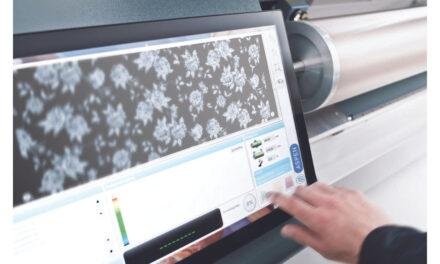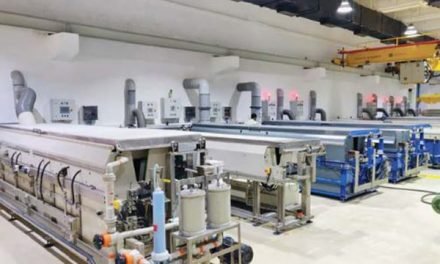In recent times, there has been an increase in participation in active sports all over the world. The highly competitive world of sports has given rise to more number of professional sports people. They are much more conscious of the sportswear and demand more specific function to be performed by the sportswear. As a result new fibres and fabrics are emerging out for satisfying the stringent needs. Textile materials are used in all sportswear and in many games as sportswear. Examples of sportswear are: Aerobic clothing, athletic clothing, football clothing, cricket clothing, games shorts, pants, shirts, socks, sweat shirts, tennis clothing etc.
Many different aspects have to be considered when designing clothing for a particular sport:
• The protection/safety functions to protect wearers from adverse weather (wind, rain snow, etc.)
• The comfort function which gives wear comfort (thermo-physiological comfort, skin sensorial comfort, body movement comfort) to wearers
• Aesthetic appeal and high fashion ability
It is not possible to achieve all required properties for sportswear in a simple structure of any single fibre. The right type of fibre should be in the right place. The behaviour of the fabric is mainly depending on its base fibres properties. The most important properties are: Fibre type, weave construction, weight or thickness of the material and presence of chemical treatments.
Textile fibrous material
For every active sport, synthetic fibres are preferred because they do not retain moisture and therefore do not get heavy upon sweating like natural fibres. Synthetic sports uniforms have better dimensional stability. Synthetic fibres offer the three major requirements in today’s high technology sports uniforms.
• Warmth, wind resistance, moisture wicking and lightness
• Comfort and feel of natural fibres
• Style and variety of colours
They can have either hydrophilic (wetting) surfaces or hydrophobic (non- wetting) surfaces. They are generally considered to be the best choice for sportswear as they are able to provide a good combination of moisture management, softness, lightweight, insulation and quick drying. It is generally agreed that fabrics with moisture wicking properties can regulate body temperature, improve muscle performance and delay exhaust.
Fibres used in sportswear There are number
There are number of textile fibres used in sportswear both natural and synthetic.
Natural fibres
Cotton
Cotton fabric is able to absorb high levels of moisture and retain it. Unfortunately the wicking property between inner and outer surfaces of the fabrics made of cotton fibres is very poor. This makes cotton unsuitable for use against the skin during strenuous activity. When cotton becomes wet, it dries out slowly. This can lead to rapid and undesired heat loss once activity has stopped. Absorption of moisture also leads to an increase in the weight of the garment and this may impair sporting performance. However, cotton fabrics are easier to clean than those based on many synthetic fibres.
Wool
Wool has good wicking ability and is a good insulator even when wet. However, wool is slow to dry and has a high wet surface coefficient of friction. It also has higher heat releasing and heat absorption properties accompanying moisture absorption and desorption respectively, which strengthens the buffering effect of the clothing between the human body and the surrounding environment.
Silk
Silk has good wicking ability and it breaths well because of its hollow structure. Silk also has high thermal conductivity and therefore feels cool to the touch. Silk is not, however, an easy fibre to care for, which is a disadvantage in sportswear that is worn frequently.
Regenerated cellulose fibres
Viscose
Viscose is more absorbent, 2-3 times more than cotton due to the presence of higher proportion of amorphous material. In addition, the slightly irregular surface of viscose fibres contributes to comfort against the skin when worn. Fabrics composed of viscose fibres, difficult to launder.
Lyocell
Lyocell fibres have a uniform circular cross section and a smooth surface. The water distribution of Lyocell is very uniform over the whole fibre cross section. Fabric derived from Lyocell fibres have the comfort associated with other cellulosic fibres, but have the added advantage of higher tensile and tearing strength.
BambooBamboo has high moisture absorption capacity and fast-drying behaviour due to its unique microstructure (there are several voids in the cross section of bamboo), bamboo fibre ensures comfort in various applications.
Modal
It is 100 per cent natural fibre, harmless to the human body, and can decompound naturally green environmental protection. Modal yarn is the best choice for the top-grade knitting and machine weaving face fabrics. Because of its splendid gas permeability, it is become more and more useable in ladies’ suit, underwear, sportswear and household textiles fields. Modal yarn fabrics’ characteristics:
1. Soft, smooth and strong silk feeling
2. Silk like gloss
3. Feel smooth and soft after repeating laundering
4. Wonderful hygroscopicity and gas permeability
5. Flamboyant colour
6. No fibrillation
Synthetic fibres
For every active sport, synthetic fibres preferred because they do not retain moisture and therefore do not get heavy upon sweating like cotton does. Synthetic sports uniforms also have better dimensional stability. Synthetic fibres offer the three major requirements in today’s high technology sports uniforms:
• Warmth, wind resistance, moisture wicking and lightness
• Comfort and feel of natural fibres
• Style and a variety of colours
Polyester
Polyester is the single most popular and common fibre used for technical textiles. It is also the most used in active wear and sportswear. Its wicking rate, although slow compared with other synthetic fibres, is faster than that of cotton. Polyester has high strength, and no loss of strength when wet.
Polyamide
Polyamide fibres such as nylon 6 and nylon 6.6 have higher moisture absorption rates and better wicking ability than polyesters but dry more slowly. It has high strength and exceptionally strong fibre used for swimwear and cycling clothing or as reinforcing fibre in blends used for sports socks.

Polypropylene
Polypropylene fibres have very low moisture absorbency but excellent wicking ability. It has good moisture management property due to its hydrophobic nature as polypropylene does not wet out, its thermal insulation is retained during and after strenuous activity which keeping the wearer warm in cold weather and cold in warm weather.
Acrylics
Acrylics have low water absorbency but can effectively wick liquid sweat. Acrylic fibres are generally used in sportswear and active wear in the form of high pile fleece fabrics with good thermal insulation.
Elastomeric fibres
These fibres are frequently used in small quantities in garments to increase stretch and support. For example knitted sportswear contains 3-10 per cent of Elastomeric fibres. It will not affect the Thermo-physiological comfort of garments that contain them.
Specialised synthetic fibres
Synthetic fibre can be modified during manufacture to improve its thermo physiological and sensory properties. A number of different techniques are available for producing such fibres, including the following:
• Block copolymers can be added to the base polymer before extrusion
• Fibres can be extruded with different cross sections
• Fibres can be coated after treatment
Micro fibres
One of the most common modifications made in order to provide improved comfort is the use of superfine fibres or microfibres with the filaments having a linear density well below 1 decitex. The use of these fibres enables very dense fabrics to be created in which the fibre surface is significantly increased and the space between the fibres is reduced. This leads to the increase of capillary action for better thermal regulation. Microfibre exhibits better moisture transport and ensures better moisture control. Microfibres have higher breathability and moisture transport properties and because they are wind- and water proof, these fabrics are widely used in rainwear and active sportswear. Specialised polyester fibres (Modified polyester) have been developed in order to produce a more natural handle, to increase absorbency, to provide better thermal resistance and to reduce static charges.
Hygra
Unitika Limited has launched Hygra which is a sheath core type filament yarn composed of fibre made from water absorbing polymer and nylon. The water-absorbing polymer has a special network structure that absorbs 35 times its own weight of water and offers quick releasing properties that the conventional water absorbing polymer cannot do. On the other hand, nylon in the core gives tensile strength and dimensional stability. Hygra also has superior antistatic properties even under low wet conditions. The main apparel applications include sportswear like athletic wear, skiwear, and golf wear etc.
Lumiace
Lumiace is a collection of polyester filaments having different fineness (0.5 – 2.0 denier per filament) and irregular cross sections. Hygra-Lumiace combination in knitted fabric is very popular in top Japanese athletes.
Dryarn
Dryarn is a completely recyclable polypropylene micro-fibre. Fabric from Dryarn is very lightweight and comfortable and used in different sports. In addition, it has a soft handle and a high thermoregulatory capacity and also dries quickly. Bacteria cannot settle on smooth surface of the fibre which avoids unpleasant odour associated with decomposition of bacteria.
Killat N
Killat N from Kanebo Ltd is a nylon hollow filament. The hollow portion is about 33 per cent of the cross section of each filament due to which it gives good water absorbency and warmth retentive property. The manufacturing technology of Killat N is very interesting. The yarn is spun as bicomponent filament yarn with soluble polyester copolymer as the core portion and nylon as the skin portion. Then by giving alkali weight loss treatment the soluble polyester copolymer of the bicomponent filament will dissolve and large hollow portion (exceeding 30 per cent of the cross section) will be created.
Triactor
Toyoba Co Ltd has developed Triactor, which is a perspiration absorbing/quick drying polyester filament. Polyester is hydrophobic and does not absorb moisture but by changing the filaments to Y shaped cross section causes quick perspiration absorbency by capillary action. The hydrophobic nature and large filament surface of polyester filaments realise quick drying and refreshing properties at the same time.
Coolmax
Coolmax is a four-channel modified polyester fibre with a cross-section that resembles a double scallop. It offers improved wicking capability and moisture vapour permeability. It dries significantly more quickly than many other fabrics used in sportswear.
Hydrofilia (Modified polyamides)
Hydrofiliais a polyamide block copolymer containing 85 per cent nylon 6 and 15 per cent polyethylene oxide diamine which provides significantly improved water absorbency, up to the levels associated with cellulosic fibres. Polyamide microfibres such as Tactel Micro, Microfine, Supplex and Microfibre, are used in fabric to produce superior wind protection, a soft feel and good moisture vapour transmission.
Thermolite
Thermoliteis a lightweight, hollow fibre offering more warmth and better moisture control than any other fibre of the same thickness.
Roica and Leofeel
Roica is a polyether tyspe spandex made by dry spinning method and Leofeel is a soft nylon-66 yarn developed by Asahi Chemical. The combination of Roica and Leofeel in mixed knitted tricot fabric gives a soft touch and excellent stretch. It is mainly used in swimwear. Various other fibres like Elite from Nylstar Co, Linel Ac from Fillattice Co, Elastil and Sens from Miroglioetc also have good stretchability and are effectively used in swimwear.
Fibre blends
Two or more fibres may be blended into a single yarn to improve the thermo physiology and other properties of the individual components. Knitted fabric made from polyester/wool blends or polypropylene/wool blends, for example, can improve wicking and insulation properties of single fibre in single layer fabrics. For example Drirelease yarn is a fibre blend comprising 85-90 per cent of a fibre of low moisture absorption such as polyester and 10–15 per cent of a hydrophilic staple fibre such as cotton.
Natural, regenerated and synthetic fibres are used in sportswear. Each of the fibres has different properties that are useful in sportswear. Blended fibre is used to obtain specific properties that are not available in a single fibre. The synthetic fibres are also being modified to attain different properties from the initial fibres. In the present study, the fibres that were used for base layer sportswear are Polypropylene as it has good wicking ability, good moisture management property; cotton as it has good moisture absorbency; and provide a good combination of softness and comfort.
Types of yarns for sportswear
Fabrics made from staple-fibre yarns are more absorbent than the fabrics made from filament yarns of the same content and yarn size, due to the looser packing of the yarn. A looser packing in the yarn increases the fibre surface area for absorption and by increasing the gaps between the yarns, increases moisture vapour permeability. Staple- fibre yarns also provide better thermal insulation due to the increased volume of air contained in the yarn. They may also improve the sensorial comfort through a warmer feeling to the touch; the yarns have slightly lower areas of contact to the skin. Crimping of synthetic yarns can improve their water vapour permeability by increasing the bulk of the fibres in yarns and yarns in fabrics, thus improving their thermophysiological comfort. However, staple fibre yarns do not shed soil as well as filament yarns and they have a greater tendency to pill or shed lint. Filament yarns are used in windbreaker jackets and in the shell and lining of skiwear where a combination of dense weave and low surface coefficient of friction are desirable.
Type of fabrics for sportswear
A wide range of woven, knitted and nonwoven fabrics are commercially available for sportswear and normal wear. These fabrics differ in their structure such as entrapped air, pore shape and size, bulk and surface properties etc. which may affect the heat and moisture transmission characteristics of the fabrics. Generally, for sportswear, knitted fabrics are preferred as these fabrics have greater elasticity and stretch ability compared to woven fabrics, which provide unrestricted freedom of movement and transmission of body vapour to the next textile layer in the clothing system. With new combinations of fabrics and yarns, and with developments in fabric construction, knitted fabric appears to be the ideal base for active sportswear. Knitted garments are mainly worn next to the skin and therefore deserve particular attention. But the major problem in both woven and knitted fabrics is that, owing to sweat generation, the fabric tends to stick with the body of the athlete resulting in discomfort during his running.
Layered fabrics
A fabric which is made up of one or more layers is called layered fabric. The performance of layered fabric in thermo-physiological regulation is better than single layer textile structure. Each layer has distinct function. Inner layer which is next to the skin wicks away the perspiration rapidly, thereby, takes away some of the body heat, keeps the body cool and dry. It is called as base layer or first layer. Middle layer provides warmth. It is called as insulating layer. Shell layer absorbs and dissipates the sweat rapidly to the atmosphere by evaporation.
On the inside, a synthetic material with good moisture transfer properties and good capillary action e.g. polyester, nylon, acrylic or polypropylene is used, whereas on the outside, a material which is a good absorber of moisture, e.g. cotton, wool, viscose rayon or their blends can be placed. Dryline by Miliken is a two layer fabric with a polyester inner layer and polyamide outer layer and is most commonly used to line waterproof or breathable outerwear.
A synthetic material with good moisture transfer properties, e.g. polyester, nylon, acrylic or polypropylene is to be used in inner layer whereas on the outside, a material which is good absorber of moisture, e.g. cotton, wool, viscose rayon, bamboo or their blends can be placed. The conductive inner layer transfers the liquid perspiration rapidly to the absorbent outer layer chiefly as a result of the capillary effect. The absorbent outside of the textile material functions as a buffer zone for excess perspiration. In another way of constructing a physiologically functional fabric is three-layer structure. The use of superfine or micro-fibre yarn enables production of dense fabrics leading to more effective capillary action, with better thermo-physiological regulation.
Inner layer
The purpose of the inner layer is to draw the sweat away from the skin to the next layers, which makes the wearer feel warmer and more comfortable. The transfer of moisture happens due to capillary action. This is called wicking, and thus the used materials are called wicking materials. When moisture has moved from the skin into (nonabsorbent) clothing, it has more surface area and will evaporate faster. If a piece of clothing does not transfer moisture well, it is not strictly an inner layer garment at all, but simply a comfortable mid-layer garment. Synthetic materials such as polyester and micro- fibre based fabrics can be used as they do not absorb moisture but may transfer it well. They can also carry specialist finishes, such as anti-bacterial agents which reduce odours and insect repellent.
Middle Layer
The middle layer is needed in cold weather to provide additional insulation. The use of multiple thin layers facilitates adjustment of warmth. The mid layer should be more loose-fitting than the inner layer, as this leaves insulating air between the layers. However, in case of good moisture transfer, too great a gap between any adjacent layers of clothing may reduce the moisture transfer by capillary action from one piece of clothing to another. On the other hand, very loose-fitting layers can allow more removal of moisture (and heat) via air circulation. Micro- denier polyester can be generally used as middle layer.
Outer Layer
The outer layer performs the function of absorption and rapid drying. The sweat which is been wicked by the inner layer gets transported through the middle layer and it should be absorbed by the shell fabric. It should also evaporate the perspiration too the atmosphere as soon as it absorbs it. Thereby, the weight of the garment remains constant and does not increase by the weight of sweat. Generally, fibres with high moisture absorption properties can be used in this layer. Mostly natural fibres like cotton, bamboo, wool, regenerated fibres, etc. can be used for the construction of shell layer.






















